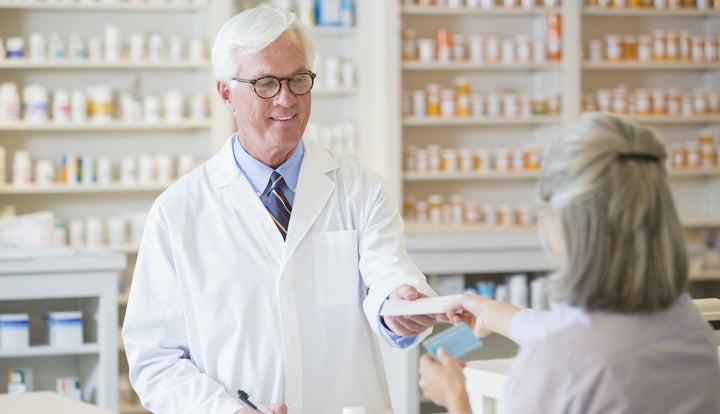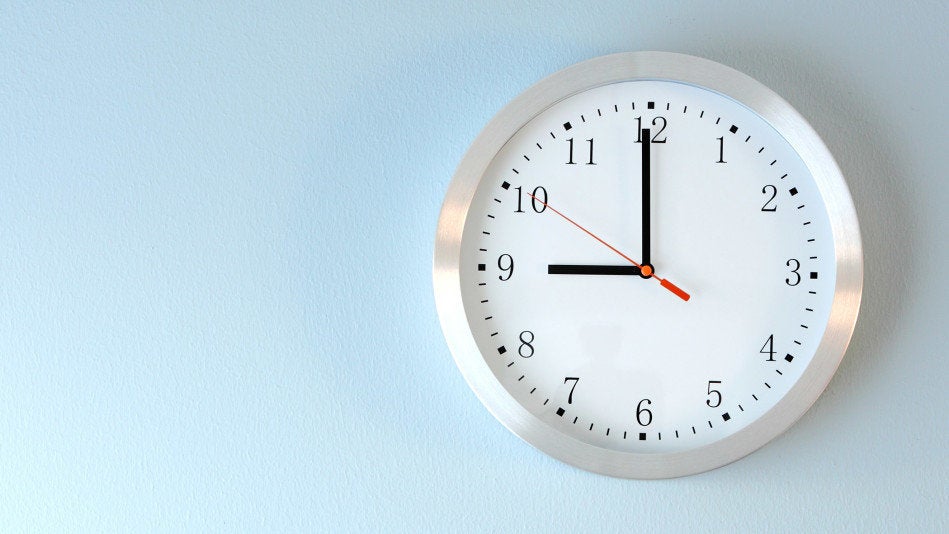
1. Don't store medication in the bathroom.
The bathroom is probably the last place in house where you should keep your medication—especially your pills, tablets, or capsules. Why? Because the moisture and extreme temperature changes can weaken your medications or cause your medications to spoil before their expiration dates. You’re better off keeping your medications on your nightstand or in a kitchen cabinet away from the stove. Just make sure when grandkids come visit that medications are stored somewhere safely away and out of sight.
2. Don't flush medication down the toilet.
With the exception of certain pain medications, most medications shouldn’t be flushed down the toilet. Many medications do not break down completely in water, and traces of medications have been detected in drinking water as a direct result of flushing unused drugs down the toilet. Here's what you should do:
- Some pharmacies have medication take-back programs that allow you to return expired or unused medications for disposal. Keep in mind you can return most medications, but not controlled substances.
- Also, Food and Drug Administration (FDA) has some great tips about how to get rid of old medication here.
- Pain medications that contain hydrocodone or other ingredients related to opium are flushable. You can see a list of medications that the FDA says are safe to flush here.
3. There's a correct way to take over-the-counter meds.
Just because you can buy certain drugs over-the-counter (OTC) doesn’t mean they are 100 percent safe to take in any amount. Technically, you can have too much of anything—no matter what it is. OTC drugs—as well as other none prescriptions products like herbs and supplements—contain information on the label that describes the best way to use those products safely.
Unless your doctor tells you otherwise, you shouldn’t take more than the prescribed amount. Many OTC drugs contain similar or related ingredients, making it very easy to overdose when you combine products. If you’re unsure if something about an OTC product, ask your doctor or pharmacist. Also, since the pharmacy where you fill your prescriptions already has your prescription list, they can easily double check to see whether an OTC product will interact with the prescription drugs you’re already taking.
4. Sometimes less really is better.
This is especially important when you are applying creams, gels, or ointments to your skin. For example, certain medications, like Retin-A used to treat acne and wrinkles makes your skin very sensitive to the sun. Apply more than the recommended amount, and you might end up with a rash, unsightly peeling, or worse. Sometimes, the prescription your doctor wrote may say not tell you how much to apply. Never be afraid to ask your doctor before you leave with his or office how much to apply or to ask your pharmacist if you’re unsure if you’re applying too much product.
5. Never share your prescriptions.
This may sound like a public service announcement, but the reality is that you everyone is different, and your doctor prescribed your medication specifically for you and only you. You might have a drug allergy or health condition that would make a shared drug dangerous for you to take.
6. Not all pills are meant to be split.
People have reasons for splitting pills—the doctor lowers your dose, it makes them easier to swallow, you want to save money, etc. In general, you shouldn’t split pills that come in extended-release, controlled-release, or sustained release form because breaking them weakens the special coatings that help the drug to last longer inside the body. Some drugs are put into capsules to because they taste so bad you wouldn’t want to take them otherwise.
Sometimes, people split pills because they want to save money or don’t think they need the full amount. If you’re splitting your medications to save money, talk to your pharmacist. Quite often, we can help you find more affordable solutions that allow you to take your medications without putting your health at risk. If you think you don’t need the full dose of medication, we can also work with your doctor to find a solution.
7. Pharmacists are drug specialists.
Pharmacists receive more training than any other medical professional—including doctors and nurses who prescribe—in pharmacology, or the study of how drugs work to help the body heal. In fact, the average pharmacist is familiar with at least 200 drugs, including their benefits and side effects—possibly more depending on where we work. So if you have a question about a medication, ask us. Chances are, we know the answer.
8. Pharmacists don't diagnose diseases.
Pharmacists are not trained to diagnose illnesses. We are trained in how to use medications safely and effectively. That said, we can give you suggestions on how to treat a condition only after it’s been diagnosed or you tell us what you have. So, if you ask us how to treat your bee sting, we can give you some recommendations on what to do based on what it looks like and your symptoms. However, if you say, “Hey, what can I do for this?” and point to some mysterious-looking sore, we’ll probably tell you to see your doctor because we can’t help you treat something without knowing what it is first.
9. Your pharmacists doesn't keep her head down to ignore you.
We have to make sure every prescription filled meets a certain standards and just what your doctor ordered. We want to give you attention, but when things get busy, we have to remain focused in order to avoid problems and make sure each prescription is correct. Many pharmacists fill hundreds of prescriptions a day; any distractions or interruptions during the busy period can cause mistakes, and make you have to wait even longer to get your prescription. If you have a question and we're looking busy, ask when is a better time to come back to talk to the pharmacist.
10. You can meet with your pharmacist one-on-one.
You may be eligible for a one-on-one meeting with a pharmacist once a year. The meeting can be face-to-face or over the phone, and is normally done by a different pharmacist than the one who normally fills your prescriptions. These meetings depend on the type of insurance plan you have, your health conditions, and the medications you are taking.
During the session, the pharmacist will review your medications and ask you some questions to make sure you’re getting the most out of your medications. Many people who have Medicare Part D coverage are eligible for a one-on-one meeting, but if you have Medicaid in live in certain states or have other healthcare plans, you may also be eligible. Because this is a special service your insurance company provides call them for details.
Read more from Grandparents.com:
5 Best Remedies for Sinus Problems

